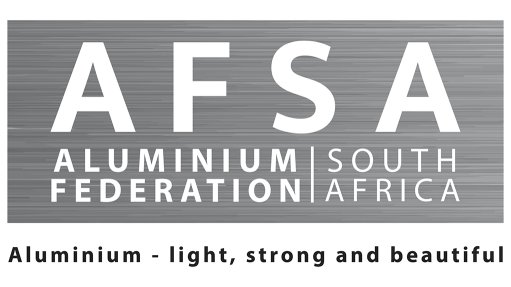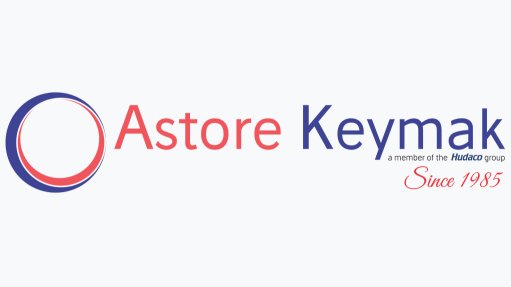Trash to treasure: Julian Treger heralds key value step for new-age miner
This article has been supplied.
By Richard Roberts, Editorial Director, Beacon Events
External validation of the positive economics of an iron ore tailings reclamation project at Lac Jeannine in Quebec, Canada, is a key step for CoTec Holdings Corp towards becoming a “21st century mining company”, according to CEO Julian Treger.
Speaking after Toronto-listed CoTec announced an initial 4.9 million tonne iron ore resource at the former openpit mine, Treger said a preliminary economic assessment (PEA) on a US$65 million, 10-year operation producing circa-400,000 tonnes a year of high-grade iron ore concentrate opened a window to the model CoTec was building on a unique portfolio of resource and technology assets.
“The model ultimately for CoTec is to be a major mining company or mid-tier mining company for the 21st century, utilising technology, with a number of assets in different geographies which use our technologies to unlock value,” said the experienced mining industry leader.
“We think that’s a cheap, sensible way to build value in today’s world.
“We’re at the beginning stages of evidencing this.”
CoTec has an option to buy 100% of Lac Jeannine for US$1.25 million and net smelter royalties up to 2.5% on project output.
The PEA compiled by a group of independent experts led by Addison Mining Services, Soutex and JPL GeoServices used an inferred resource of 73Mt grading 6.7% Fe which CoTec expects to grow in its next-stage feasibility study work. A 2007 study by Soutex suggested 154Mt of tailings grading 7.5% were deposited at the Lac Jeannine tailings area up to the end of operations in 1984.
Treger said infrastructure established under CoTec’s $65m restart plan to handle 7Mtpa run-of-mine material and produce circa-400,000tpa of 66.8% Fe concentrate wouldn’t need to be expanded in the event of a longer-term extraction scenario. However, confirmation of a larger resource could materially change the PEA after-tax US$59.5m NPV.
“We’re dealing with tailings not a conventional mine and the tailings are pretty uniform throughout,” Treger said.
“We believe the deposit is twice the size we’ve announced and we intend to do more drilling to demonstrate that. We’re very excited that the upside is much more than we’ve announced.
“I believe the NPV will be more like $120m.
“The other point worth making is this is the first stage of the project. We’re confident we’ll get to the stage where we get to a 68% [concentrate grade], which is considered to be strategic. We’re just underneath that at the moment but with more drilling and testing I’m confident that we’ll be there, which makes it a strategic asset as far as the Canadian Government is concerned.
“That will lead to all sorts of positive developments in terms of financing.
“The next stage will be to identify a number of these sites, and we’re working on some others, and then put them together to create sufficient material for a pelletiser which will be another leg-up in value creation.
“Ultimately we think this project when combined with others will have an NPV hopefully closer to $200m, which alone is many multiples of CoTec’s current market cap [cC$30m].
“And this is just one of many assets we own.”
The Lac Jeannine project and Quebec-Ontario iron pelletising vision is emblematic of CoTec’s wider plan to valorise waste and recycle materials, using innovative technologies, to create new revenue streams and value.
CoTec has a growing stack of technology investments and direct and indirect exposures to “waste” resource assets earmarked as application channels for the tech in portfolio companies.
“Our strategy has always been to look at the recycling space as a way in which we can produce high-grade green materials quickly – much more quickly than conventional ways of mining,” Treger said.
“We only took the option [on Lac Jeannine] 12 months ago. It’s still going to take two or three years to be in production, but that’s lightning speed when it comes to the mining sector.
“These sites have been previously mined. They’ve been permitted.
“They are effectively brownfield restarts which also have the enormous advantage for governments and states that we shrink the rehabilitation profile of these sites and so we will be saving significant amounts of money for the government of Quebec in due course once the project is in production.
“Governments particularly in Canada and the US are saddled with costs of fixing up these sites, particularly if they’re orphan sites [not operated/owned by a mining corporation].
“If this model is replicated it could save many billions of dollars for the different provinces in Canada and obviously can be applied to other jurisdictions as well.”
CoTec has equity stakes in iron pellet cold agglomeration technology company, Binding Solutions, Maginito, MagIron and Ceibo.
Ceibo’s low-carbon copper heap leaching process for chalcopyrite and other refractory copper minerals competes with the likes of Jetti Resources, which raised funds near the end of 2022 at a US$2.5 billion valuation.
Maginito has proprietary separation technology – or Hydrogen Processing of Magnet Scrap (HPMS) – for recovering rare earths in recycled magnet materials and CoTec also has 50% of the HyProMag US joint venture with Mkango Resources, which is looking to embed itself in the North American RE, or neodymium, magnet supply chain.
HPMS absorbed about $100m of research and development funding at the University of Birmingham in England.
“One of the really difficult things about rare earths is processing the individual elements,” Treger said.
“It’s very tough to do. It’s very complicated. China is great at it. We haven’t really done that yet in a major way in the West.
“What our technology does is it doesn’t bother with that. We call it the short-loop process.
“We take the mix that’s already been processed for magnets and just recycle that mix. That allows us in a much simpler way, and a much faster and safer way, to get the magnets the West will need, not only for defence applications but also for lots of applications.
“We are in the process of doing a study on the first hub and spoke [recycling/processing] structure. We think the hub will be in Texas. The spokes we’re identifying. We’re starting to talk with different sources of feedstock who can supply us and who we will be very useful to as well because if we can take the magnets out of this recycling process before they are shredded, recycling of the rest of the [material] will be much more efficient because it won’t have magnetic material in it.
“It’s super interesting for e-waste recyclers.
“And it’s another very interesting project which we think has enormous value for CoTec.”
Treger said the company continued to assess other technologies as it moved into “asset application” of what was already in its locker.
“When we started CoTec we said this is not a tech incubator; this is not a tech hoarding company,” he said.
“Ultimately it’s going to be an operator using technology.
“And I think that confused a lot of people.
“But you can now see the way in which we can take technologies and apply them to undervalued waste assets which is our major focus.
“Recycled iron ore, copper and rare earths all very important.
“This is a new type of mining.”
*Julian Treger will speak on mining, metals, technology and the circular economy at IMARC 2024 in Sydney, Australia (October 29-31), and at Resourcing Tomorrow 2024 in London, England (December 3-5).
Article Enquiry
Email Article
Save Article
Feedback
To advertise email advertising@creamermedia.co.za or click here
Announcements
What's On
Subscribe to improve your user experience...
Option 1 (equivalent of R125 a month):
Receive a weekly copy of Creamer Media's Engineering News & Mining Weekly magazine
(print copy for those in South Africa and e-magazine for those outside of South Africa)
Receive daily email newsletters
Access to full search results
Access archive of magazine back copies
Access to Projects in Progress
Access to ONE Research Report of your choice in PDF format
Option 2 (equivalent of R375 a month):
All benefits from Option 1
PLUS
Access to Creamer Media's Research Channel Africa for ALL Research Reports, in PDF format, on various industrial and mining sectors
including Electricity; Water; Energy Transition; Hydrogen; Roads, Rail and Ports; Coal; Gold; Platinum; Battery Metals; etc.
Already a subscriber?
Forgotten your password?
Receive weekly copy of Creamer Media's Engineering News & Mining Weekly magazine (print copy for those in South Africa and e-magazine for those outside of South Africa)
➕
Recieve daily email newsletters
➕
Access to full search results
➕
Access archive of magazine back copies
➕
Access to Projects in Progress
➕
Access to ONE Research Report of your choice in PDF format
RESEARCH CHANNEL AFRICA
R4500 (equivalent of R375 a month)
SUBSCRIBEAll benefits from Option 1
➕
Access to Creamer Media's Research Channel Africa for ALL Research Reports on various industrial and mining sectors, in PDF format, including on:
Electricity
➕
Water
➕
Energy Transition
➕
Hydrogen
➕
Roads, Rail and Ports
➕
Coal
➕
Gold
➕
Platinum
➕
Battery Metals
➕
etc.
Receive all benefits from Option 1 or Option 2 delivered to numerous people at your company
➕
Multiple User names and Passwords for simultaneous log-ins
➕
Intranet integration access to all in your organisation














